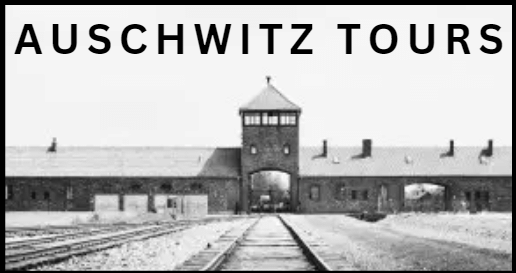History Of Auschwitz
Auschwitz was established by Nazi Germany in 1940, in the town of Oswiecim, Poland. The town was chosen due to its location and existing infrastructure, including a railroad and large army barracks. Originally, the camp was intended to house political prisoners, but as the war progressed, it became a center for the extermination of Jews in Auschwitz and other targeted groups. Auschwitz was part of the Nazi regime's plan to create a "Final Solution" to the so-called "Jewish Question," which involved the systematic murder of Jews and other minorities in Europe.
Auschwitz, also known as Auschwitz-Birkenau, was one of the largest Nazi concentration and extermination camps during World War II. It was established in 1940 in the town of Oswiecim, Poland, and became a death camp in 1941 after the decision was made to implement the "Final Solution" to the "Jewish Question." The camp had gas chambers that were used to murder Jews and other targeted groups, with up to 6,000 people killed in a single day. The camp also had a "selection" process in which new arrivals were sent to either the gas chambers or forced labor.
Book Now: Oskar Schindler's Enamel Factory Tickets
Life at Auschwitz was characterized by brutality, dehumanization, and constant fear. Auschwitz Prisoners were subjected to forced labor, starvation, and brutal treatment by the SS guards. They were also subjected to medical experiments, including sterilization and the testing of new drugs. Disease was rampant in the overcrowded conditions, and prisoners faced the constant threat of execution. The living conditions were abysmal, with inadequate shelter, clothing, and hygiene facilities. The prisoners were stripped of their identity, dignity, and humanity, and their lives were reduced to a constant struggle for survival.
Auschwitz was liberated by Soviet troops in January 1945, and survivors were left to cope with the trauma of their experiences. Many were too weak or ill to leave immediately and required medical treatment. The camp was turned into a museum and memorial in 1947, and efforts were made to identify and bring Nazi war criminals to justice in the years that followed. The Liberation of Auschwitz was a turning point in the history of the Holocaust, and it marked the end of one of the darkest chapters in human history.
Controversies surrounding Auschwitz have centered on issues such as preservation, access, and tourism. There have also been debates about the appropriate ways to commemorate and remember the victims of the camp, including questions about the use of artifacts and the representation of the Holocaust in popular culture. Additionally, some individuals and groups have sought to deny or minimize the extent of the atrocities committed at Auschwitz and other Nazi concentration camps. The controversies surrounding Auschwitz highlight the ongoing struggle to come to terms with the legacy of the Holocaust and to ensure that its lessons are never forgotten.
Also Checkout: Auschwitz Tours
FAQs
When did the Auschwitz start being built?
Construction of Auschwitz began in May 1940, after the decision to establish a concentration camp near the town of Oswiecim, Poland. Initially, the camp was intended to hold political prisoners, but it quickly evolved into a site for forced labor, medical experimentation, and ultimately, mass murder. The first inmates arrived in June 1940, and the camp continued to expand over the next several years, eventually encompassing a complex of several sub-camps and gas chambers.
Checkout & Book: Wawel Castle Tickets
How many years did it take to complete the Auschwitz?
The construction of Auschwitz was not completed in a single phase but rather expanded over time. The first prisoners arrived in June 1940, and the camp continued to grow and evolve throughout the war. New buildings and facilities were added, including gas chambers and crematoria, as the camp's purpose shifted from forced labour to mass murder. In January 1945, as Soviet forces closed in, the Nazis began dismantling and destroying parts of the camp, but much of it remained intact. So, it can be said that Auschwitz was not completed in a set number of years, but rather grew and changed throughout its existence until its eventual liberation in January 1945.
When did the Auschwitz finish construction?
However, the most significant period of construction occurred between 1941 and 1943, when several new gas chambers and crematoria were added to the complex. By the end of 1943, there were four crematoria in operation at Auschwitz-Birkenau, each with its own gas chamber. The Nazis began dismantling and destroying parts of the camp in January 1945 as Soviet forces approached, but much of it remained intact.
You May Also Like: Restaurant Near Auschwitz
What is the best time to visit Auschwitz?
The best time to visit Auschwitz in Poland is during the early morning hours, as the place is less busier and less crowded during this time. Plan your visit to Auschwitz and avoid the hassle and get your skip the line tickets, and explore the different attractions, gas chambers and museums inside the concentration camps.
What is special about Auschwitz?
The auschwitz poland is one of the major highlights as well as a historical attraction that narrates the story of the genocide under the rule of Nazis. This concentration camp tells you the story of the thousands of lives ones that were taken here, during the Nazi period and Hitler rule. Under the Nazi, the arrest of Polish jews were capacitated inside the prison, and hence these humongous consecration camps were built wherein you will find gas chambers, torture chambers and more.

.jpg?w=1080&dpr=2)